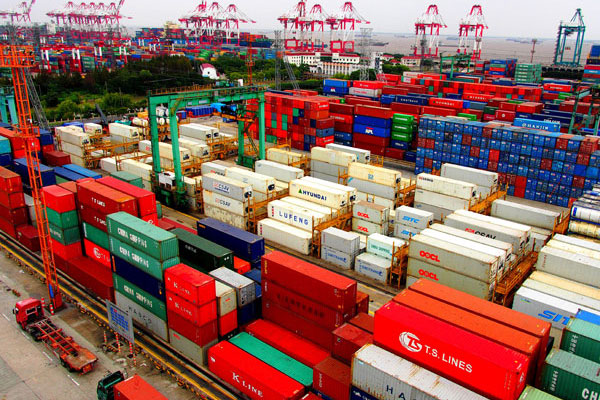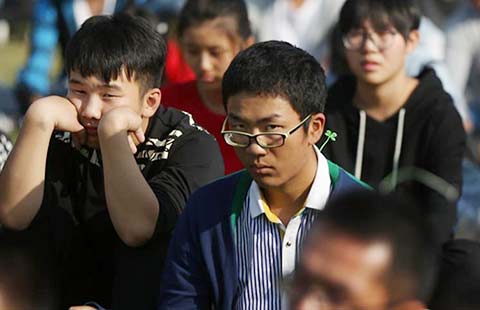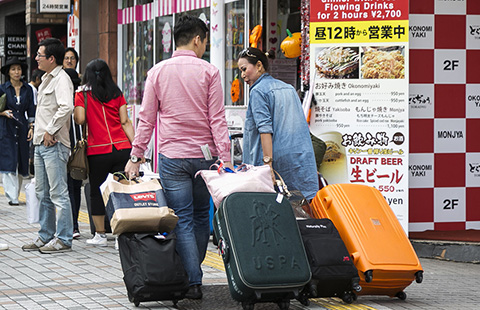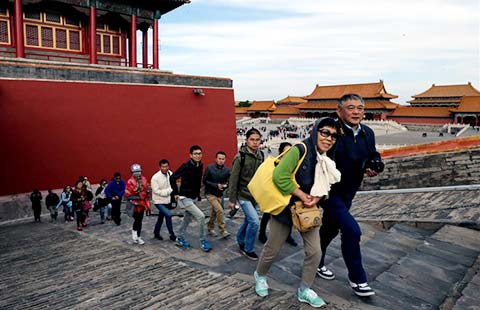
 |
|
Containers pile up at Waigaoqiao Port in the Shanghai Free Trade Zone. [Photo/Xinhua] |
Exports dropped 1.1 percent to 1.3 trillion yuan ($206 billion) and imports decreased 17.7 percent to 924 billion yuan ($146 billion). The trade surplus totaled 376.2 billion yuan, up 96.1 percent, the General Administration of Customs said.
For the first three quarters, foreign trade dropped 7.9 percent year on year to 17.87 trillion yuan with exports down 1.8 percent to 10.24 trillion yuan and imports down 15.1 percent to 7.63 trillion yuan. Trade surplus surged by 82.1 percent to 2.61 trillion yuan.
Related story: 'Capacity exports' help China and the world from Xinhua
BEIJING - China's fresh resolution to seek industrial cooperation with other countries will create mutual benefits amid the feeble global economic recovery, rather than finding an outlet for polluting and outdated overcapacity.
Chinese Premier Li Keqiang has announced that the country will accelerate exports of equipment and promote industrial cooperation, a move that aims to encourage Chinese enterprises to invest abroad and helps less-developed economies to modernize.
After decades of rapid economic advance through opening up and reform, China has moved into the later stage of industrialization and accumulated huge capacity to churn out fundamental products including iron and steel, cement and plate glass.
This infrastructure, technology and expertise, though under-utilized in China, is urgently needed in economies in the middle of industrialization. For instance, African countries which rely heavily on imports are crying out for their own factories and production lines.
Chinese enterprises are willing and able to lend a helping hand.
In this way, local industry will surge with employment boosted and infrastructure improved. At that point, more overseas capital can be attracted, benefitting both local people and other global investors.
At the core of exporting China's equipment and extra capacity is to build a new global value chain that treats all players in the world fairly, be it developed economies or poor countries.
The bottom line is the cooperation should not be interpreted as China transplanting polluting factories it no longer wants. China will not seek cooperation that sacrifices the environment or the long-term interests of its partners.
China is backing up the "capacity exports" drive with an array of initiatives that will facilitate the process, including the Asian Infrastructure Investment Bank, the "Belt and Road" Asian infrastructure project and the New Development Bank.
It is also imperative for China to move forward with the cooperation if a country wants to upgrade its manufacturing sector and overhaul its industrial structure.
China's industrial development is far from balanced: in some industries, it suffers from overcapacity; in many others, it lacks sophisticated manufacturing products.
The outflow of China's extra industrial capacity can help the country absorb excessive capacity, a pressing problem holding back economic growth and transformation, and thereby resist the downward pressure and foster new growth areas.
Industrial cooperation is a two-way process, which means that China will pull out the stops to attract cutting-edge technology and equipment, which are desperately needed for industrial upgrading.
Closer industrial cooperation is expected to bring more competition to both Chinese and overseas markets, driving domestic enterprises to become more high-tech and sharpen their competitive edge.
In summary, a win-win situation is taking shape as China's own transformation will also bring opportunities to the world.








